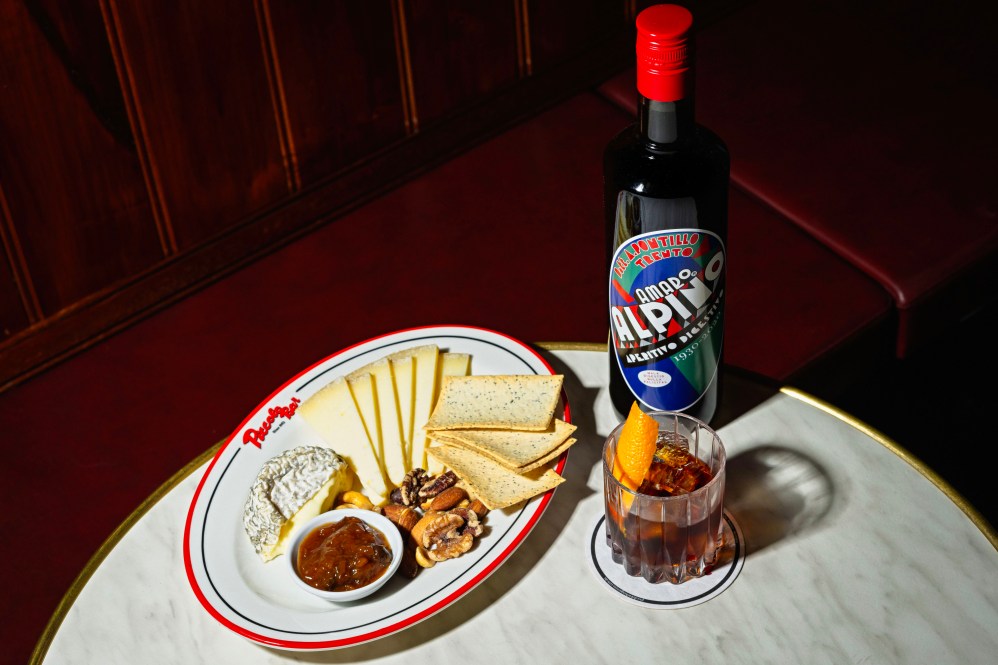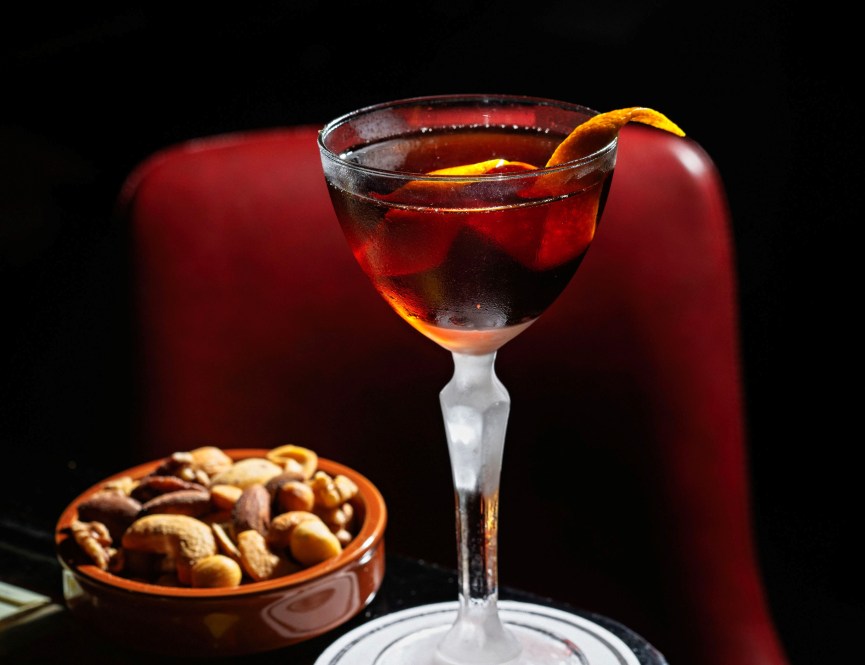In Italy, it is customary to pour guests a glass of amaro to signify the end of an evening, with the ritual dating as far back as the 19th century. Most associate amaro with its bracingly bitter taste, but bartenders say it’s an unparalleled spirit within the liquor world.
There are numerous styles and brands of amaro found in each region in Italy along with iterations in the US and here in Australia. Although amaro is typically enjoyed neat, it has become a welcome addition to cocktails, with venues tapping into the potential of both applications.
Hospitality speaks to Piccolo Bar’s David Spanton and Bar Liberty’s Nick Tesar about categorising amaro, their go-to brands and tips on utilising the spirit’s nuanced flavour.

Amaro was used for medicinal purposes long before anyone thought about putting it in a cocktail. It started its journey in mediaeval Europe when monks brewed the dark spirit in monasteries as a remedy to cure ailments. Fast forward to the 1800s and it was marketed as a health tonic. But thanks to the invention of column distillation, the product improved and people began to drink amaro in a leisurely fashion.
Families across Italy made their own amaro which led to the development of big brands including Montenegro, Cynar, Dell’Etna and Amaro Ramazzotti.
Unlike other booze categories, amaro can be difficult to define. But the translation of its name helps, with amaro meaning bitter in Italian. “There has to be an element of bitterness,” says Bar Liberty’s Nick Tesar. “It can be light and fresh, palette-stripping-ly intense and everything in between.”
Bittering agents including gentian root, angelica (wild celery), coriander seed and rhubarb roots are used to make amaro. “If you look at Italian categories, there’s things like artichoke thistle, but amaro can also have more of an alpine, menthol edge,” says Tesar. “It goes back to where it’s from originally and what grows in the area. Amaro from the south of Italy [for example] has a lot more citrus character.”
Bittersweetness may be one of the defining features of amaro, but it can further broaden the scope in terms of liqueur. “Anything can be an amaro if it’s bittersweet, so there are some issues there with understanding how to categorise it,” says David Spanton, owner of Piccolo Bar in Sydney.
Spanton suggests trying to understand amaro within the context of aperitifs and digestifs, using colour as a method to break down the categories. “For aperitifs, I look at products that have a sunset colour such as Campari and Aperol,” says Spanton. “Amaro has the night-time colours; we’re talking Braulio and Averna that are dark and syrupy-looking.”

Since there are no strict rules with classifying amaro, there’s plenty of room when it comes to making cocktails. Building the perfect amaro-based drink begins with choosing the right brand.
“Internationally, we see more diversity in base spirit, diversity in alcohol volume and level of bitterness,” says Tesar. “This allows for broader use, especially when mixing drinks, as opposed to just drinking amaros by themselves.”
At Bar Liberty, Tesar stocks the bar with locally made amaros from Okar to Never Never and his own bitter liqueur brand Marionette.
“I’m a big fan of finding interesting, small producer made goods to provide a different experience for customers.” says the bartender. “Okar amaro from Applewood have really lit the way for the Australian industry. A bunch of other aperitif styles (slightly biased because I make one of these, which is the Marionette bitter) are also coming into the market.”
Newer versions of amaro tend to have more sweetness compared to the Italian classics. “Fernet is the most bracing subcategory of amaro and what that means is top-end bitterness, but you’ve also got a lower sugar [content],” says Spanton. “It is what a lot of the amaros used to be like when they started out in the 19th century because sugar was hard to find and expensive.”
Each brand has varying levels of bitterness and sweetness, but tweaks can be made to leverage the flavour profile. “You can build drinks and make sure different styles help bring out the flavours you want, whether it be herbs or citrus,” says Spanton.
For most of the drinking public, amaro is an acquired taste, which is why it is important to think about balance when using it in a cocktail. “Many bartenders experience these flavours so often and are desensitised to the intensity of bitterness,” says Tesar. “When we make a drink, it’s often drier and more bitter, whereas a general consumer doesn’t want something that’s so in your face. It’s about showing restraint and using amaro to build flavour as opposed to intensity.”
Tesar uses amaro’s complex bitterness as a tool to add depth to a drink. “I really like to use it as a flavour adjuster,” says Tesar.
“Thinking of an amaro like you would Angostura bitters and using the sugar component in that instead of sugar. I make an adjusted Old Fashioned by adding 10ml of amaro and a dash of orange bitters instead of regular bitters. You’ve got the different bitter characteristic, but also a more interesting sugar than just adding sugar syrup.”

Less is more when it comes to amaro, and as Spanton says, “once you put it in, you can’t take it out.” The bartender recommends experimenting with smaller amounts first and relies on presentation when introducing amaro to first-time drinkers.
“Presentation is really important when you’re using these products, whether it be in a cocktail or neat,” he says. “We present amaro neat on ice with an orange in a whiskey glass. But for a lot of the traditional sticklers, it should be room temperature.”
Sticking to a ratio is a sure-fire way to achieve a well-balanced amaro cocktail. With the boom of bitter liqueurs such as Aperol and Campari, the 3:2:1 spritz ratio has been a hit. “The 3:2:1 is probably one of the key success stories for amaro because whether you’re a bartender or a consumer, it makes it easy to understand and mix right,” says Spanton.
Amaro is often boxed in as a digestif or an after-dinner drink, but the liqueur can also play a role in lighter cocktails. The Paper Plane, created by award-winning New York-based Bartender Sam Ross is considered one for the books by Tesar and Spanton.
The drink consists of equal parts whiskey, Aperol, lemon juice and Amaro Nonino — an alpine aged amaro from Fruili, Italy. “The Paper Plane is very much for me an aperitif,” says Tesar. “It’s bright, citrusy and still has bitterness. But the bitterness balances with citrus, so it’s a modern sell. Using amaros in moderation means it can be in any style of drink and it’s not heavy handed when it comes to alcohol.”
The menu at Piccolo Bar is made up mostly of classic cocktails that go hand in hand with traditional spirits such as amaro. The Hanky Panky is one example that sees Fernet-Branca paired with gin and vermouth.
“Just 5ml of Fernet-Branca adds a beautiful little bitterness to it and rounds out the vanilla you’re getting from the vermouth,” says Spanton. “It also marries really well with the juniper from the gin.”

Other amaro-centric cocktails at Piccolo include the amaro sour which uses a reverse shake method to achieve a fluffy-headed cocktail. “We do 45ml of Averna amaro, 15ml Maker’s Mark bourbon, 15ml lemon juice and 10ml sugar syrup,” says Spanton. “We shake that and add three drops of Angostura bitters and then reverse shake. We put all the ice in, shake and then we strain it back into the cocktail strainer on one side before adding 30ml egg white and dry shaking.”
Amaro has more versatility than most people give it credit for. Whether it’s used in a booze-forward cocktail or a spritz-like refresher, the liqueur will always have a place on bar menus. The world of amaro has become more diverse, with local producers paying close attention to the growing market.
“Craft distillery in America is about 10 to 15 years ahead of Australia,” says Tesar. “We saw interesting takes on amaro going around America and we’re starting to see that in Australia now. The definition between aperitifs, digestifs and everything else has been blurred. What was considered amaro is now much broader.”
Image credit: Dominic Xavier; Christopher Pearce
Sponsored Content

Discover Dairy Farmers’ range of shredded cheese
Sponsored by Bega

Beachfront Melbourne Club catering & restaurant opportunity
Sponsored by Future Food
Trending Now
Resources
Lorem ipsum dolor sit amet, consectetur adipiscing elit. Fusce ac ornare lectus. Sed bibendum lobortis...
Lorem ipsum dolor sit amet, consectetur adipiscing elit. Fusce ac ornare lectus. Sed bibendum lobortis...
Sign up for our newsletter
